- Home
- James Rollins
Altar of Eden Page 3
Altar of Eden Read online
Page 3
“It looks like a severe form of atavism,” Lorna said.
“And that would be what in English?”
She offered him a small apologetic smile. “Atavism is where a genetic trait, lost for generations, reappears in an individual.”
“A genetic throwback?”
“Exactly. In this case, a throwback to a time before snakes lost their limbs.”
“That’s a mighty long throw, isn’t it?”
She shrugged and moved on. “Most atavism is caused by the accidental recombination of genes. But I don’t think it was accidental here, not with these many cases.”
“So you’re saying someone bred them this way on purpose. Is that even possible?”
“I can’t rule it out. Genetic science has come a long way and continues to push boundaries. At ACRES, we’ve successfully cloned wild cats. We’ve even merged a fluorescent protein from a jellyfish to produce a cat that glows in the dark.”
“Mr. Green Genes. I read about that,” he said. “In fact, it’s one of the reasons why I called for you. I needed an expert on genetics and breeding. Someone to tell me who could have produced this bizarre cargo.”
He led her through the hold. A wire cage held a mass of winged bats the size of footballs.
“Vampire bats,” Lorna said. “But they’re ten times the size they should be. May be a form of primordial gigantism.”
Similarly a caged fox down the row was the size of a bear cub. It hissed and growled and threw itself against the bars. They quickly moved past, stopping briefly at a tall cage that held an ordinary-size parrot, but it had no feathers.
It cawed loudly, leaped to the front bars, and studied them while cocking its head back and forth. Jack had a hard time hiding his disgust. There was something so alien and wrong about its appearance.
Lorna just moved closer. “When baby parrots first hatch, they’re featherless or covered only with a light down. I don’t know if this one’s stunted into an infantile state, or if it’s a throwback, too. In fact, it’s theorized that birds are the closet living relatives of dinosaurs.”
Jack didn’t argue. The creature—leather-skinned and beaked— definitely had a prehistoric look to it. But what really got him unnerved was the sharpness of its attention.
The bird leaped back to its perch, spouting a garble of Spanish. That aspect of the parrot—the ability to mimic—remained intact. It began to screech a string of numbers in English, its pronunciation and diction sounding perfectly human, if pitched slightly sharper.
“ . . . three one four one five nine two six five . . .”
They continued onward, then Lorna stopped in midstep. She stared back at the cage as the bird continued to screech out numbers. It went on and on without stopping.
“What is it?” he asked.
“That parrot . . . those first numbers . . . I can’t be sure . . .”
“What?”
“Three one four one five. Those are the first five digits of the mathematical constant pi.”
Jack remembered enough from high school geometry to know about pi, represented by the Greek letter n. He pictured the number in his head.
3.1415 . . .
Awe filled Lorna’s voice as the parrot continued its numerological tirade. “Pi has been calculated to trillions of digits. I’d love to find out if the numbers the bird is mimicking are sequentially correct. And if so, how long of a sequence the parrot has memorized.”
As the bird continued without pause, Jack noted a hush fall over the hold. The mewling, growling, even shuffling of the other animals grew quiet, as if they, too, were listening. Eyes, reflecting the light, seemed to stare toward them from the dark cages.
With a shake of his head, he moved on. He had a crime to investigate.
“What I really wanted to show you is back here.”
He led her to the larger pens at the stern end of the hold. One pen held a nursing lamb and its mother. But rather than curly wool, the animals’ coats hung straight to the ground, more like a yak’s pelt than a sheep’s. But that’s not what Jack wanted to show Lorna.
He tried to urge her on, but she paused at the next cage. The occupant of that pen lay stiffly on its side atop the hay floor, legs straight out, eyes wide and fixed, dead. It looked like a miniature pony, but the creature was no larger than a cocker spaniel.
“Look at its hooves,” Lorna said. “They’re cloven. Four toes in front, three in back. The earliest ancestor of the modern horse— Hyracotherium—was only the size of a fox and had the same digital division.”
She crouched to examine the dead body. The hoof of one toe had been torn away. Its head bore signs of fresh concussions, as if it had panicked and thrashed against the bars before it died.
“Looks like something scared it to death,” she assessed.
“I can guess what that might have been.” Jack headed toward the very back of the hold. “This way.”
She followed. Irritation entered her voice, along with a thread of deeper anger. “What were these people doing? For that matter, how did they do it?”
“That’s what I hoped you could answer. But we have a bigger and more immediate problem.” They reached the last pen. It was large and heavily barred. Hay covered the floor, but no animal was in sight. “We found the door dented and broken open when we came down here.”
“Something escaped?” Lorna glanced from the empty pen back toward the passageway and stairs, clearly recalling the blood trail.
“We need you to tell us what it was,” he said.
She frowned at him. “How?”
He pointed as something buried beneath the hay shifted. A weak mewling followed.
Lorna glanced to him, her face shining with curiosity. He pulled the door and held it open for her to enter.
“Be careful,” he warned.
Chapter 4
Lorna ducked through the low door and into the pen. Inside, the space was tall enough to stand upright. Still, she kept slightly crouched. Most of the hay had been pushed and piled to the back of the pen. She studied the space with a critical eye. Her nose picked up the strong ammonia smell of old urine. She avoided stepping in a sludgy pile of scat, loose and watery.
Whatever had been caged in here had been ill.
The hay pile at the back shifted as something burrowed away from her. It backed into a corner and could retreat no farther. The mewling had stopped.
Lorna crossed, knelt, and gently picked the hay away. She spotted snowy fur with faint gray spots. A long tail lay tucked around the curled, frightened shape. Small feline ears lay flat against its head.
“A leopard or jaguar cub,” she whispered.
“But it’s white,” Jack said by the doorway. “Like some sort of albino.”
She stared at the cub’s pinched blue eyes. “No. Eye color is normal. Likely it’s a form of inherited leucism. Where only the skin pigment is lost. Either way, it’s definitely some type of panther.”
“I thought you said it was a leopard or jaguar.”
She understood his confusion. It was a common mistake. “Panther’s not really a taxonomic term. The genus Panthera covers all the big cats. Tiger, lion, leopard, jaguar. And a white panther could be a version of any of those cats.”
“And which one is that cub?”
“From the skull structure and what I can tell from the faint spotting, I’d guess jaguar. But I can’t be sure.”
Lorna knew that Jack needed more information. He must have suspected what was plain to her at first glance and wanted confirmation.
Out of the nest of hay, tiny eyes squinted up at her, poorly focused. They looked newly opened, suggesting the cub was only a couple of weeks old or maybe even younger. Additional juvenile features—stubby rounded ears, underdeveloped whiskers—supported her assessment of its newborn status. But what was throwing her off was its size. It had to weigh fifteen or twenty pounds, large enough to be seven or eight weeks old.
Even Jack must have recognized the disparity and what
it suggested. “And the age of the cub?”
“A week or two.” She glanced back at him. “Extrapolating that would make an adult around four to five hundred pounds, more the size of a Siberian tiger. A typical jaguar weighs half that.”
“Another genetic throwback?”
She sighed. “I’ll need to run some tests to be sure, but first I’d like to examine the cub more closely.”
She carefully scooped the cub out of its nest. It squirmed and cried, but only weakly. She felt its bones; a pinch of skin revealed dehydration. She bit back anger at its mistreatment and cradled the cub to her belly. She did her best to calm and reassure the little fellow. From a glance at its genitalia, it was definitely a male.
She held the cub firmly, letting the panic beat itself out. “Shh, it’s okay, little one.”
One hand cupped his head while a finger gently and rhythmically rubbed under his chin. After a moment the cub leaned into her and let out a hungry cry. She allowed him to suckle on her finger.
Definitely a newborn.
As the cub attempted to nurse, she felt something in the mouth that shouldn’t be there. At this age, young cats had no teeth, only gums to knead a milky teat. But her fingertip probed as the cub suckled. She discovered four teeth, fanged canines. While small and immature, they were still sharp and prominent—longer on top than on bottom.
And they shouldn’t be there at all, not at this age.
The early presence suggested developmental dominance of this feature. It heralded a genetic expression of some significance. As the realization of what that might be sank in, she felt a trickle of dread along the back of her neck. She glanced over to the rest of the cages, settling on the dead pony.
No wonder it had died of fright.
She turned to Jack as she cradled the cub. “We’ve got a bigger problem.”
“What’s that?”
As she had extrapolated the infant’s weight to estimate the size of the adult, she did the same now with its dentition. She knew what the early presence of these canine milk teeth might portend. She pictured fangs growing proportionally, upper fangs curving and extending beyond the lower jaw.
“This cub is something more than just an oversize jaguar,” Lorna warned.
“How so?”
She stood up, carrying the creature, and ducked out to join Jack. “This is the cub of a saber-toothed cat.”
Chapter 5
Back in the brightness of the morning sun, Jack stood on the trawler’s deck with Lorna Polk. She still cradled the jaguar cub. If the woman was right, they were looking for a massive cat, pale as a ghost, possibly with fangs ten to twelve inches long. She had gone on to explain how such fangs were not limited to the infamous saber-toothed tiger. According to her, many other prehistoric felines, even some marsupials, carried this genetic trait.
But a saber-toothed jaguar?
It seemed impossible. Still, he did not doubt her assessment. She had spoken at length about atavism and genetic manipulation and had supported her case soundly. Plus he had seen the other freakish animals caged down below.
He stared over the rail toward the coast. It was a dense mass of bottomland forests, marshes, and swamps, encompassing millions of acres of the Mississippi River delta.
It was also his home.
He’d been raised in the bayou, where family and clan held sway far more than any rule of law. His own family earned their income through shrimping and fishing . . . and through a few less-than-legal enterprises on the side. He knew how easy it was to hide out in the swamps, how difficult it could be to track something that wanted to keep out of sight.
Lorna stepped over to him. She’d been talking on the radio, making arrangements with U.S. Fish and Wildlife.
“They have a boat on the way,” she said. “They’re bringing portable cages and tranquilizers. I also talked to Dr. Metoyer over at ACRES. They’re setting up a quarantine lab for the animals.”
He nodded. It had been decided to use the isolated ACRES facility as a base of operations. One of his men had found a steel trunk locked up in the captain’s quarters. It held a laptop and some digital tapes. An expert on computer forensics was already en route from New Orleans to start working on the contents. Hopefully the archive held more than just the captain’s stash of porn.
But before they abandoned the trawler completely, Jack still wanted more answers . . . specifically about the most pressing threat.
“Do you have any idea where this jaguar might have gone? Could it have drowned during the storm?”
“I doubt it. Big cats have no aversion to water, and jaguars are quite strong swimmers. And besides, these waters are shallow. It could easily have swum from island to island, taking rest stops along the way.”
“And you think it would have headed all the way for the coast.”
“Jaguars typically have territories covering a hundred square miles. These islands are too small. It would have kept going.”
“But what about her cub?” He nodded to the creature cradled in Lorna’s arms. “Would a mother abandon it so easily?”
“Not likely. Jaguars are very protective of their young. Nursing them until six months, mothering them until the age of two. But they’re also practical. This cub is sickly. A typical litter for a jaguar is two or three cubs. I suspect there was another cub caged with this one. The mother took the stronger of the two with her, abandoning the weaker as a means of survival.”
“So she’ll have a cub with her. That could slow her down.”
“It could also make her more dangerous. She’ll aggressively defend her last child.” Lorna’s brow tightened with a new concern. She pointed to the blood trail on the stairs. “Which raises another question. Where are the bodies? The ship’s crew?”
“Not here, and not on the island,” Jack said. “We searched. From the blood patterns, we figured the crew numbered four. Maybe the bodies were washed overboard.”
“Or they were dragged overboard.”
“Dragged? By the cat?”
“From the blood on the stairs, that body wasn’t just washed away. The cat must’ve hauled it up from below.”
“But why?”
“That’s a good question. Cats often hide their kills to protect the meat, even hanging them up into trees—but if that’s not possible, they’ll normally just leave the bodies to rot as carrion and move on.” Lorna frowned. “The behavior here . . . it’s not typical. If I’m right, it displays an unusual cunningness, as if she’s trying to cover her trail.”
Lorna met his gaze. He saw the worry in her eyes.
“Maybe you’re reading too much into it,” he offered. “The tropical storm blew to near-gale forces last night. Maybe the cat and the bodies were all swept out into the Gulf by the tidal currents.”
“There’s one way to find out.”
“How?”
LORNA WADED FROM the Zodiac onto the sandy beach of the neighboring island. She left her boots in the boat and rolled her pants to her knees.
Jack followed at her side, his attention on the hump of sand and tangled cypress trees ahead. He went barefoot, too, but he kept his boots laced over one shoulder in case he had to venture into the dense thicket that crowned the island. He also carried an M4 carbine assault rifle over his other shoulder. If the cat had survived the storm, it had likely already reached the coast, but he wasn’t taking any chances.
At Lorna’s suggestion, he had piloted the Zodiac from the trawler to the closest neighboring island.
“The cat would have come here first on its way to the mainland,” Lorna insisted as she climbed up the beach. “We need to look for any telltale pugmarks.”
“Pugmarks?”
“Paw prints. We should search above the high-tide mark. Also watch for scat, urine, scratched trees.”
“I know how to track,” Jack said. “But what if the cat swam past this island?”
“Then we search the next one. She couldn’t have gotten too far before needing to rest. Fight
and flight take its toll. Adrenaline eventually gives out. She’ll have needed a place to catch a breath.”
They began to circle the island, keeping to the high-tide mark in the sand. They scanned the beach in silence. The day’s heat had grown to a stifling blanket. Only a few clouds remained from last night’s storm. Sweat rolled down his back and pooled at his belt line.
“Over here,” Lorna suddenly said.
She hurried away from the water, heading up the sand to where a large cypress shadowed the beach. Spanish moss draped and formed a curtain. Some of it had been ripped away as if something large had torn through its mesh.
“Careful!” Jack warned and grabbed her arm. He pulled her back and raised his rifle. “Let me check it out first.”
He edged to the tree. With his rifle leading the way, he poked through the rent in the moss. He scanned the bower below, then the limbs above. It looked clear.
Lorna spoke at his shoulder, not heeding his command to hang back. “Look at the sand near the trunk.”
The ground had been churned up, but he noted a single distinct paw print pressed deeply into the sand. They crossed together into the shadows. Jack kept watch for any sign of movement around them. In such a heightened state of alertness, he was all too conscious of Lorna’s shoulder against his side, of the smell of her hair, of her skin.
“The thing is huge,” Lorna said as she knelt down. “From the size of this paw, I may have underestimated its weight.”
She splayed out her hand over the print. The paw was easily twice as big.
“So it definitely survived,” he said.
“And it’s headed to the coast.”
Jack stood up and clutched his rifle. “Even after the storm, the delta will be full of fishermen, campers, hikers. We’ll have to evacuate the area. Put together a hunting party while we still have daylight.”
Lorna joined him. “You’ll have a hard time finding the cat during the day. It’ll find a place to hole up and sleep. Your best chance is at dusk, when jaguars usually begin their hunt.”

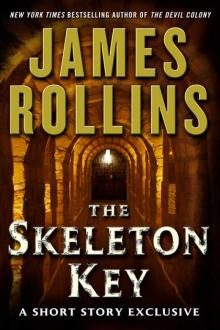 The Skeleton Key
The Skeleton Key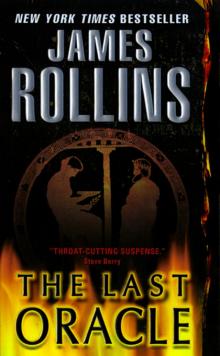 The Last Oracle
The Last Oracle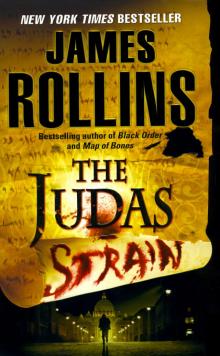 The Judas Strain
The Judas Strain Black Order
Black Order Sandstorm
Sandstorm Ghost Ship
Ghost Ship The Devil Colony
The Devil Colony Subterranean
Subterranean The Doomsday Key
The Doomsday Key The 6th Extinction
The 6th Extinction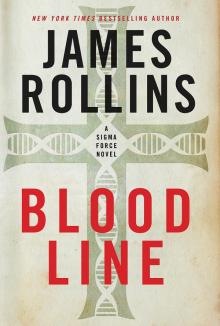 Bloodline
Bloodline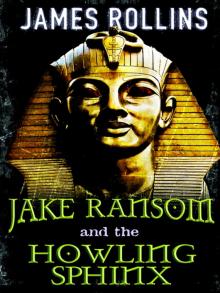 Jake Ransom and the Howling Sphinx
Jake Ransom and the Howling Sphinx The Midnight Watch
The Midnight Watch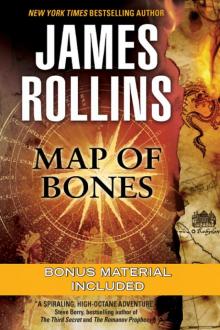 Map of Bones
Map of Bones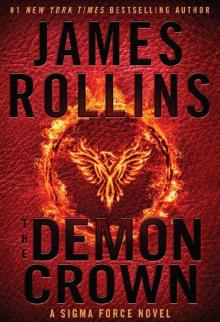 The Demon Crown
The Demon Crown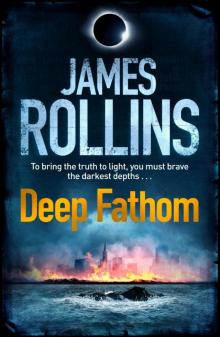 Deep Fathom
Deep Fathom Sigma Guide
Sigma Guide Kowalski's in Love
Kowalski's in Love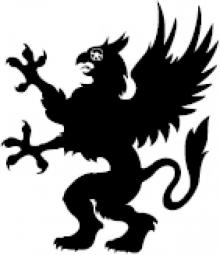 Jake Ransom and the Skull King's Shadow
Jake Ransom and the Skull King's Shadow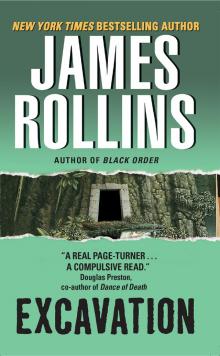 Excavation
Excavation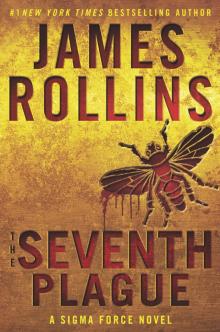 The Seventh Plague
The Seventh Plague Altar of Eden
Altar of Eden Unrestricted Access: New and Classic Short Fiction
Unrestricted Access: New and Classic Short Fiction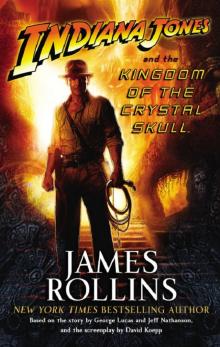 Indiana Jones and the Kingdom of the Crystal Skull
Indiana Jones and the Kingdom of the Crystal Skull Crucible
Crucible The Eye of God
The Eye of God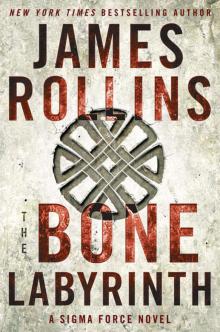 The Bone Labyrinth
The Bone Labyrinth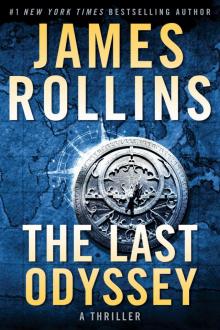 The Last Odyssey: A Thriller
The Last Odyssey: A Thriller Unrestricted Access
Unrestricted Access Amazonia
Amazonia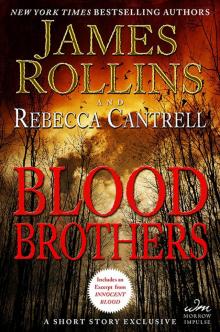 Blood Brothers: A Short Story Exclusive
Blood Brothers: A Short Story Exclusive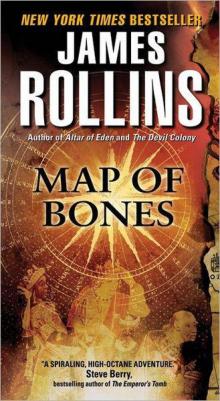 Map of Bones: A Sigma Force Novel
Map of Bones: A Sigma Force Novel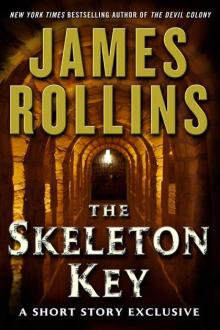 The Skeleton Key (sigma force)
The Skeleton Key (sigma force)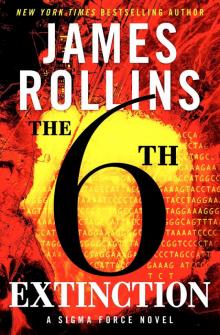 Sigma Force 10 - The Sixth Extinction
Sigma Force 10 - The Sixth Extinction Innocent Blood
Innocent Blood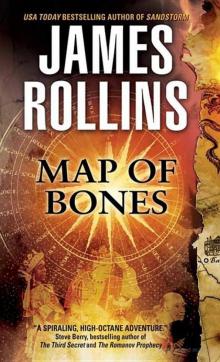 Map of Bones sf-2
Map of Bones sf-2 The Eye of God: A Sigma Force Novel
The Eye of God: A Sigma Force Novel The Eye of God: A Sigma Force Novel sf-9
The Eye of God: A Sigma Force Novel sf-9 The Pit
The Pit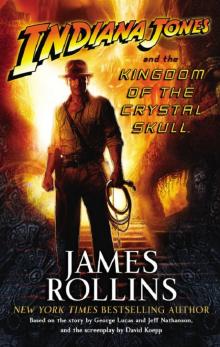 Indiana Jones and the The Kingdom Of The Crystal Skull
Indiana Jones and the The Kingdom Of The Crystal Skull The Last Oracle (2008) sf-5
The Last Oracle (2008) sf-5 City of Screams
City of Screams The Doomsday Key and The Last Oracle with Bonus Excerpts
The Doomsday Key and The Last Oracle with Bonus Excerpts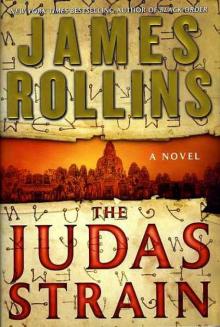 The Judas Strain sf-4
The Judas Strain sf-4 Blood Infernal
Blood Infernal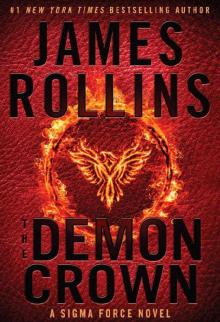 The Demon Crown: A Sigma Force Novel
The Demon Crown: A Sigma Force Novel War Hawk: A Tucker Wayne Novel
War Hawk: A Tucker Wayne Novel SANDSTORM sf-1
SANDSTORM sf-1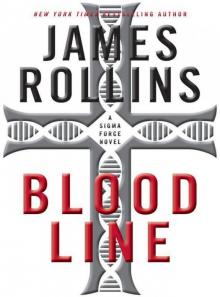 Bloodline: A Sigma Force Novel
Bloodline: A Sigma Force Novel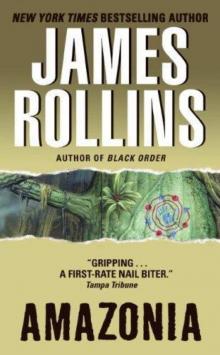 Amazonia: a novel
Amazonia: a novel The Last Oracle: A Sigma Force Novel
The Last Oracle: A Sigma Force Novel City of Screams (the order of the sanguines)
City of Screams (the order of the sanguines) Ghost Ship: A Sigma Force Short Story
Ghost Ship: A Sigma Force Short Story The Doomsday Key: A Sigma Force Novel
The Doomsday Key: A Sigma Force Novel